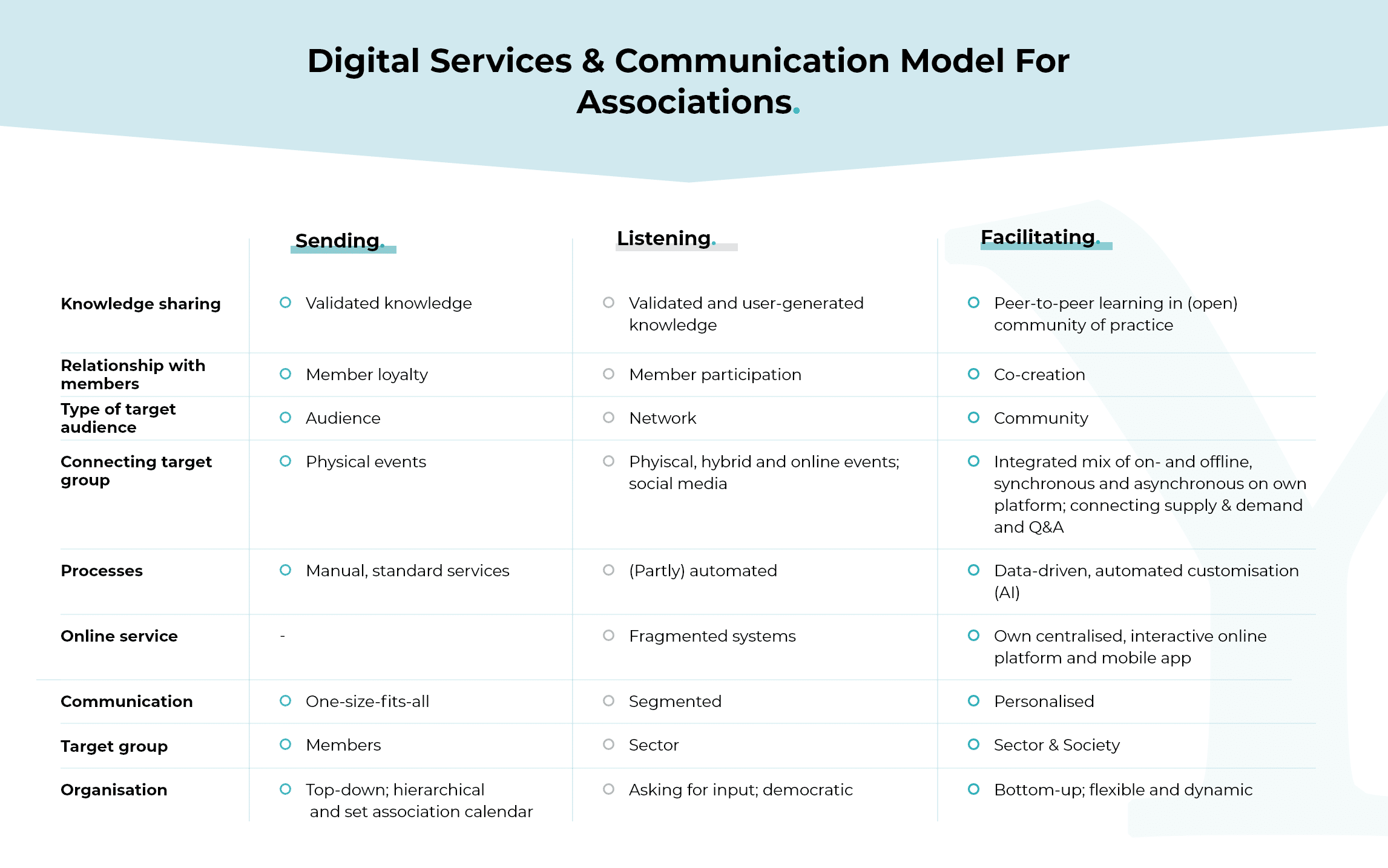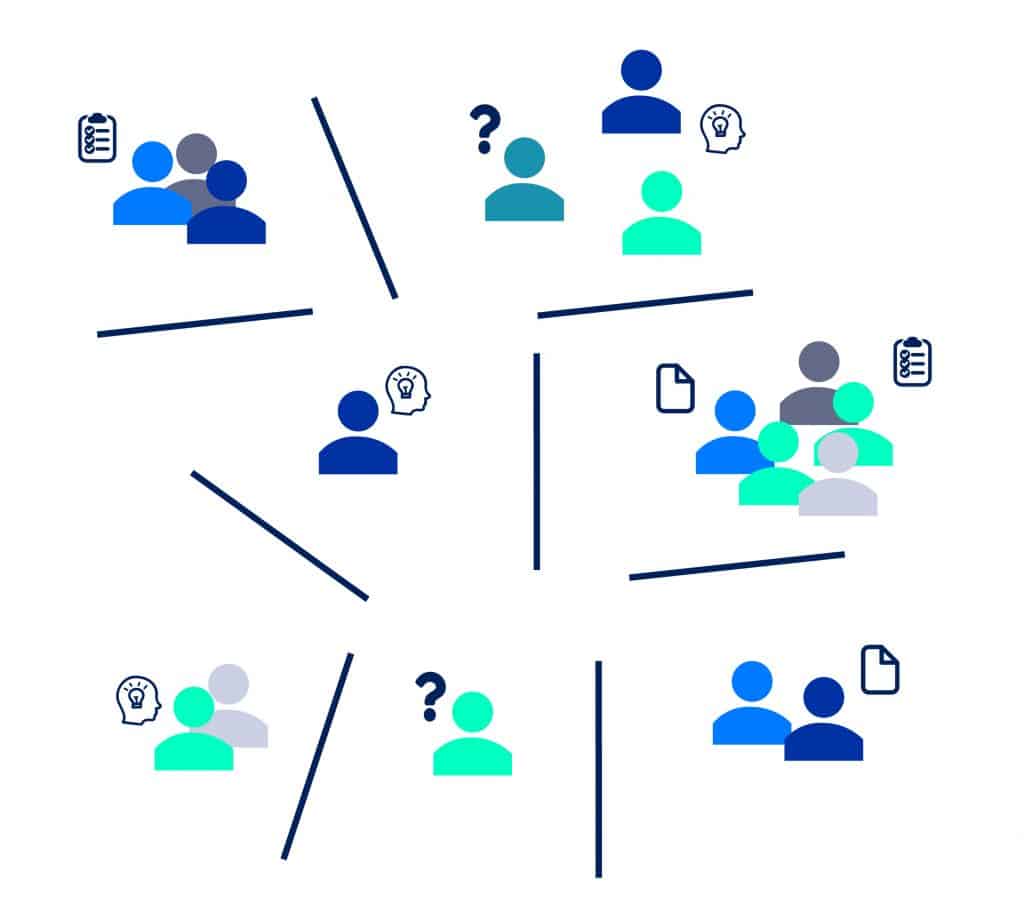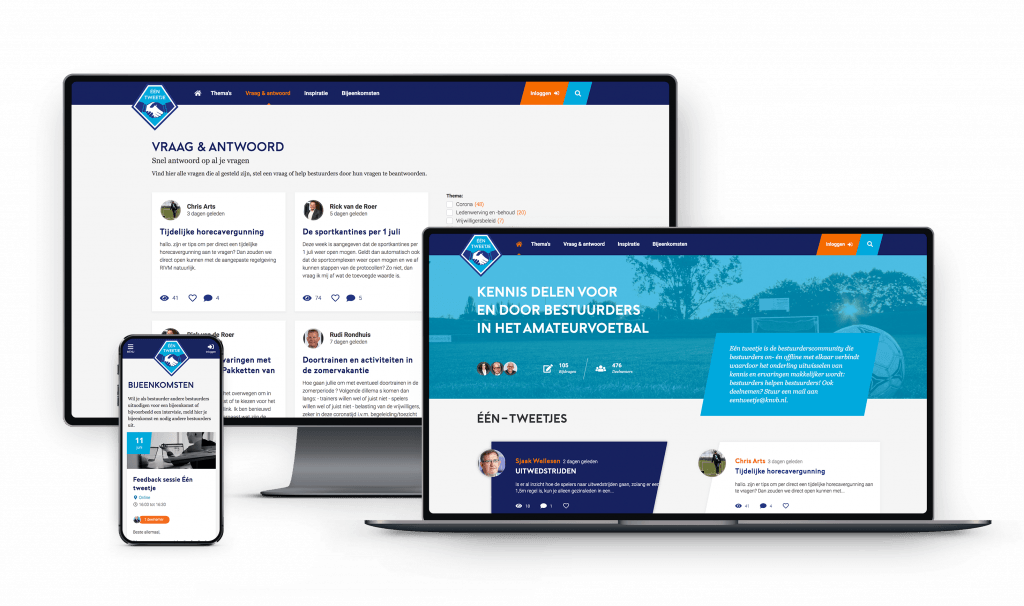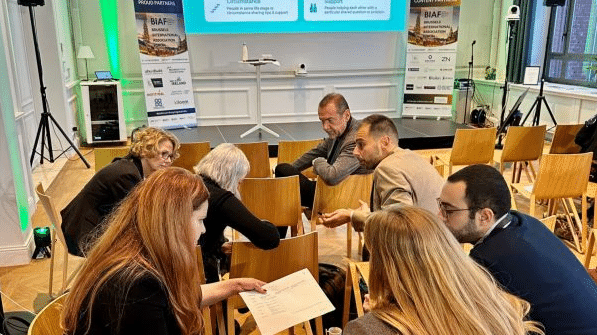Sharing knowledge and the changing role of associations [2/5]
Your industry or professional association is full of knowledge. Not only do (association) experts possess this knowledge, but members also have a wealth of expertise. Sharing this knowledge is key to creating added value for your members. But how do you do that? The “Digital Service & Communication Model for Associations” provides insight into where your association currently stands and how you can more effectively facilitate knowledge sharing. Mathijs and Dennis explain this and offer numerous tips for fostering a thriving digital association.
By: Mathijs Vleeming & Dennis van Aalst, Yard | Digital Agency
Also read:
(click on image to enlarge)

Types of Knowledge
At the core of any professional- or industry association is sharing professional and trusted knowledge and setting standards and best practices with and among members. This is where their value lies – in the past, present, and the future, as research by the ASAE Research Foundation shows.
There are two types of knowledge:
- Validated or Explicit Knowledge: This is knowledge that has been validated and published by (association) experts. Explicit knowledge is observable. It has been expressed or stored, making it independent of any individual.
- User-Generated or Implicit Knowledge (Also called Tacit Knowledge): This is knowledge generated and shared by members or other types of participants. Implicit knowledge is personal and lives within people’s heads, and is more difficult to share with others.
In practice, the first type of knowledge is often referred to as “information,” while the second is called “knowledge.”
Validated Knowledge
Broadcasting associations primarily focus on gathering and publishing validated knowledge or information. This often takes the form of reports, publications, research, and scientific articles. Additionally, they frequently offer professional education and certification. This typically means that knowledge not published by the association is not available—at least not under the association’s umbrella.
User-Generated Knowledge
For listening associations, user-generated knowledge is equally important. This type of association also shares the knowledge that resides in the minds of its members. It involves subjective insights, intuition, and experience.
For example, you can gain knowledge from a book about project management (explicit knowledge). However, how you manage a project in practice also involves implicit knowledge. This is where you combine what you’ve learned from books with experience, skills, and attitude. We often refer to this as sharing best practices. This implicit knowledge isn’t documented or easily accessible; if you’re not physically present, neither is your knowledge.
Facilitating industry and professional associations take knowledge sharing a step further: they focus on peer-to-peer learning. Their members collaborate, actively share their knowledge, and learn from one another. This can be seen as a community, specifically a “Community of Practice.”
What is a Community?
There are many definitions of the word “community”. If you ask 10 people, you get 10 different answers. Even though the specific definition is not highly relevant, here’s the definition we like to use:
A community is a group of people who share certain characteristics, such as interests, challenges, and needs. They come together in the same space to share an experience. Communities often have a common higher purpose, and participants are motivated to improve both themselves and others.
A community is not a black-and-white concept; it’s not about being either a community or not. Community is a feeling. The stronger the sense of community, the more a group truly functions as a community.
What is a Community of Practice?
A “Community of Practice” is a specific type of community, aimed at knowledge sharing and peer-to-peer learning.
Communities of Practice are groups of people who share a concern or a passion for something they do and learn how to do it better as they interact regularly
Etienne Wenger
(Source: wenger-trayner.com)
A Community of Practice has three defining characteristics:
- The Domain: Members of the community share a common interest, skill, and/or commitment to a particular subject. The shared focus on this subject creates a foundation and dedication that motivates members to participate.
- Community: Through joint activities, discussions, brainstorming sessions on problem-solving, and information sharing, members build relationships. This lays and strengthens the foundation of the community. The interaction and peer-to-peer learning transform members into a true community.
- Practice: Members of a Community of Practice develop a shared repertoire of resources in a knowledge base: experiences, stories, reports, tools, and methods for addressing recurring issues—in short, a shared practice. This knowledge, skillset, and inspiration can be applied by all members in their daily professional activities. Developing this shared practice takes time and requires continuous interaction.
The combination of these three elements forms a Community of Practice. By developing these elements in parallel, such a community emerges.
Knowledge Sharing Within a Community of Practice
An increasing number of associations are focusing on peer-to-peer learning and sharing user-generated knowledge. They facilitate this in an (online) Community of Practice, thereby enhancing their relevance.
As Wenger states, “A growing number of associations, both professional and otherwise, are seeking ways to focus on learning through reflection on practical experiences. Their members are restless, and their loyalty is fragile. They must offer valuable learning activities. The peer-to-peer learning activities typical of learning communities provide a complementary alternative to the more traditional course offerings and publications.”
Facilitating Peer-to-Peer Learning
You can stimulate and facilitate knowledge sharing by connecting members in relevant ways and removing barriers. Encouraging and supporting interaction and informal learning is key. For example, ask members how they have applied certain knowledge or what experience they have with specific topics. This helps unlock the knowledge that resides in their minds.
At the same time, it’s important to ask what knowledge members need. What do they want to learn more about? By understanding this, you can match existing knowledge with the needs of your members. This allows you to offer more relevant and personalized information and knowledge, making it easier for members to find answers to their questions.

Expectations of Digital Natives: Online Knowledge Sharing
An increasing number of members expect that knowledge exchange and interaction with other members can happen online. This is because more professionals from newer generations are joining professional and industry associations. These younger generations bring with them new expectations. As digital natives who have grown up with the internet and all its digital possibilities, they expect to be digitally connected with other members, to be digitally engaged with the association, and to have immediate access to the information they need.
Staying Relevant
To remain relevant as an association, it’s essential to meet these needs. Provide your members with opportunities to connect online and share knowledge easily. The best way to achieve this is through a dedicated online community platform. Such a platform offers numerous possibilities to support and encourage knowledge sharing in a smart way, like connecting members with specific questions to others who have the answers.
When done correctly, this approach adds tremendous value. It enhances your association’s collective capacity to develop and innovate knowledge, thereby increasing your potential impact on your mission.

Case – KNVB: Directors Helping Each Other in an Online Community
What can other associations learn from the KNVB?
A great example of a facilitating association that encourages the sharing of user-generated knowledge is one of the largest sports federations in the Netherlands: the Royal Dutch Football Association (KNVB). The KNVB aims to leverage the knowledge of its members and allow it to flow freely, rather than solely distributing information from the top down. The KNVB sees this approach as a game changer.
The KNVB accomplishes this through its online community platform, Eén tweetje. Many football clubs face similar challenges. What do you do when members don’t pay their dues? Where can you buy a scoreboard? How good is the quality of artificial turf fields? With around 2,400 (amateur) football clubs in the Netherlands, it’s likely that one of them has already encountered the same problem and found a solution.
This is where Eén tweetje comes into play. Using an extensive Q&A module, Directors of amateur football clubs can engage in discussions and tap into each other’s knowledge.
Bottom-Up Approach
To create a safe environment, the KNVB itself is not active on the platform—except for a few community managers. The organization even has a rule against communicating or “broadcasting” on the platform, reserving that for other channels. Community management is conducted almost entirely behind the scenes.
This bottom-up approach also impacts the organisation of the association. The community plays a crucial signalling role: the online conversations reveal exactly what issues and concerns are prevalent among football clubs (their members). The KNVB uses these signals to offer relevant services, tailoring their support to meet the actual needs of their members.
Example: Savings Campaign
The KNVB, in collaboration with a partnering supermarket, had launched a savings campaign for amateur clubs. However, through discussions on Eén tweetje, club managers expressed that the campaign required a lot of effort and yielded minimal results. The KNVB quickly responded by working with its partner to adjust the campaign. As a result, the revised campaign became a success after all, generating significantly higher returns for the clubs and averting a potential PR disaster.
The KNVB extends this bottom-up philosophy into its overall policy, with full support from its leadership. This commitment has allowed the bottom-up approach to take root, leading the KNVB to structure the association in a more facilitative way, while still maintaining existing frameworks.
Read more about the KNVB project.
Read blog 3 in this 5-part series: Member Engagement and the Changing Role of Associations
The way associations connect their members is changing. What does it take to successfully facilitate member connection? And how do you support this digitally?
About the Authors
Mathijs believes that associations can increase their impact by connecting their members throughout the year and facilitating knowledge sharing. He draws on his 20 years of experience in the “heart of the world of professional community builders,” specifically in the international meetings industry for association conferences and events at the International Congress and Convention Association, where he was Director of Marketing.
For over 3 years, Mathijs has worked as a community strategist and consultant. In this role, he helps associations and other organizations create online community strategies. He does this at Yard Digital Agency, the market leader in digital communication and community solutions for associations and public organizations in the Netherlands.
Mathijs wrote an eBook with input from associations and community leaders titled “The Association Community Compendium: How to Harness the Collective Power of Your Members.” He is also a board member of the Community Consultants Collective and a contributing expert for Association Meetings International.


Dennis believes in the power of digital. With passion, he and his motivated colleagues support social organizations in achieving digital impact. Dennis is an experienced online strategist within the association sector. [Can you provide evidence of this and share more about your experience with associations?] Due to his in-depth knowledge of associations, he serves as a sparring partner and advisor for associations looking to grow digitally.
Together with the KNVB and Yard | Digital Agency, Dennis won the Dutch Interactive Award (DIA) 2021 in the category of communities. They won this award for the platform Eén tweetje, for which Dennis developed the strategy in collaboration with the KNVB [is this correct?]. “The community represents a game changer in the way the KNVB communicates,” according to the jury. “A shift from top-down to peer-to-peer.”
Additionally, Dennis is a trainer in digital communities at De Nederlandse Associatie (DNA). Through open and in-company workshops, he helps industry and professional associations discover the value of an online community. He also guides them in launching an online community and fostering interaction and engagement within the community.

Watch: Case Study TVVL
TVVL is the largest association of professionals in installation technology. How does this association use digital possibilities to connect its members and exchange knowledge? John Lens, Director of TVVL, talks about it with Mathijs Vleeming and Dennis van Aalst.
Also read

The day-to-day work of a community manager: 7 responsibilities

Why your community needs a mission

